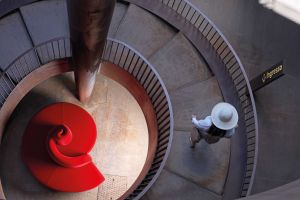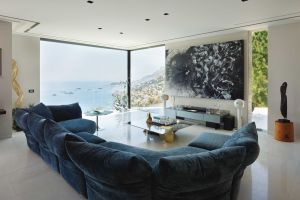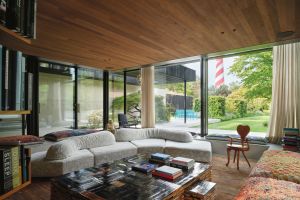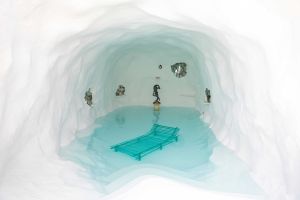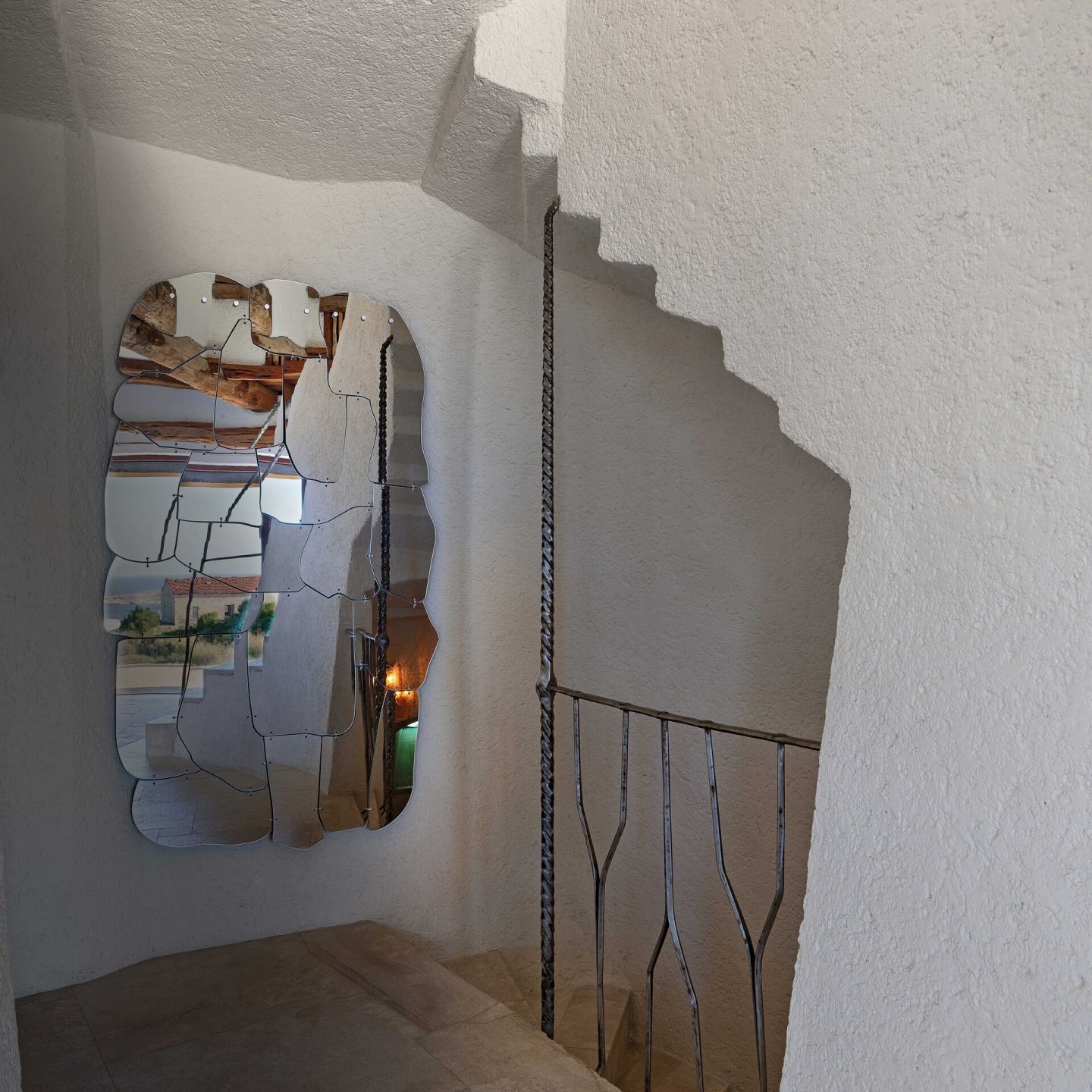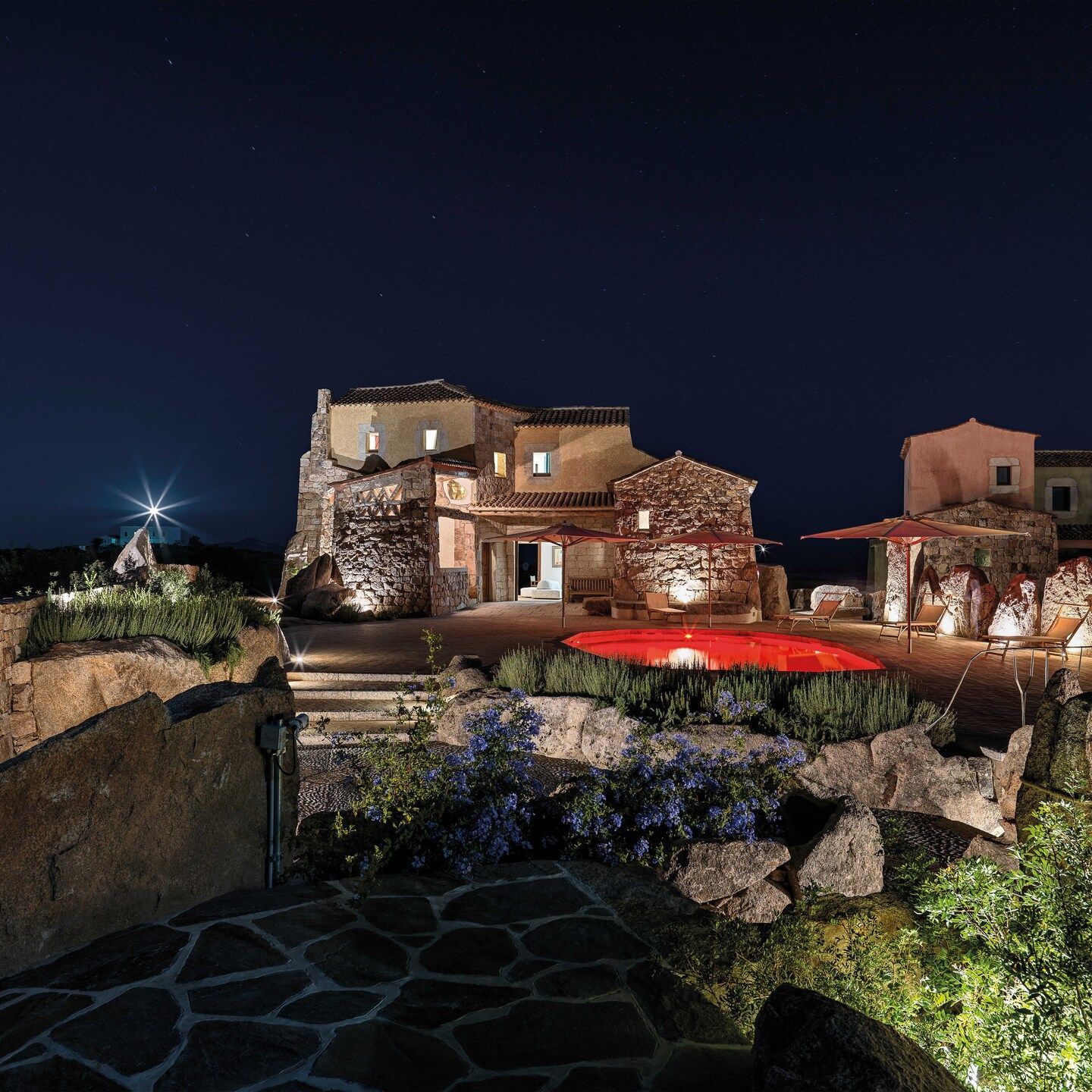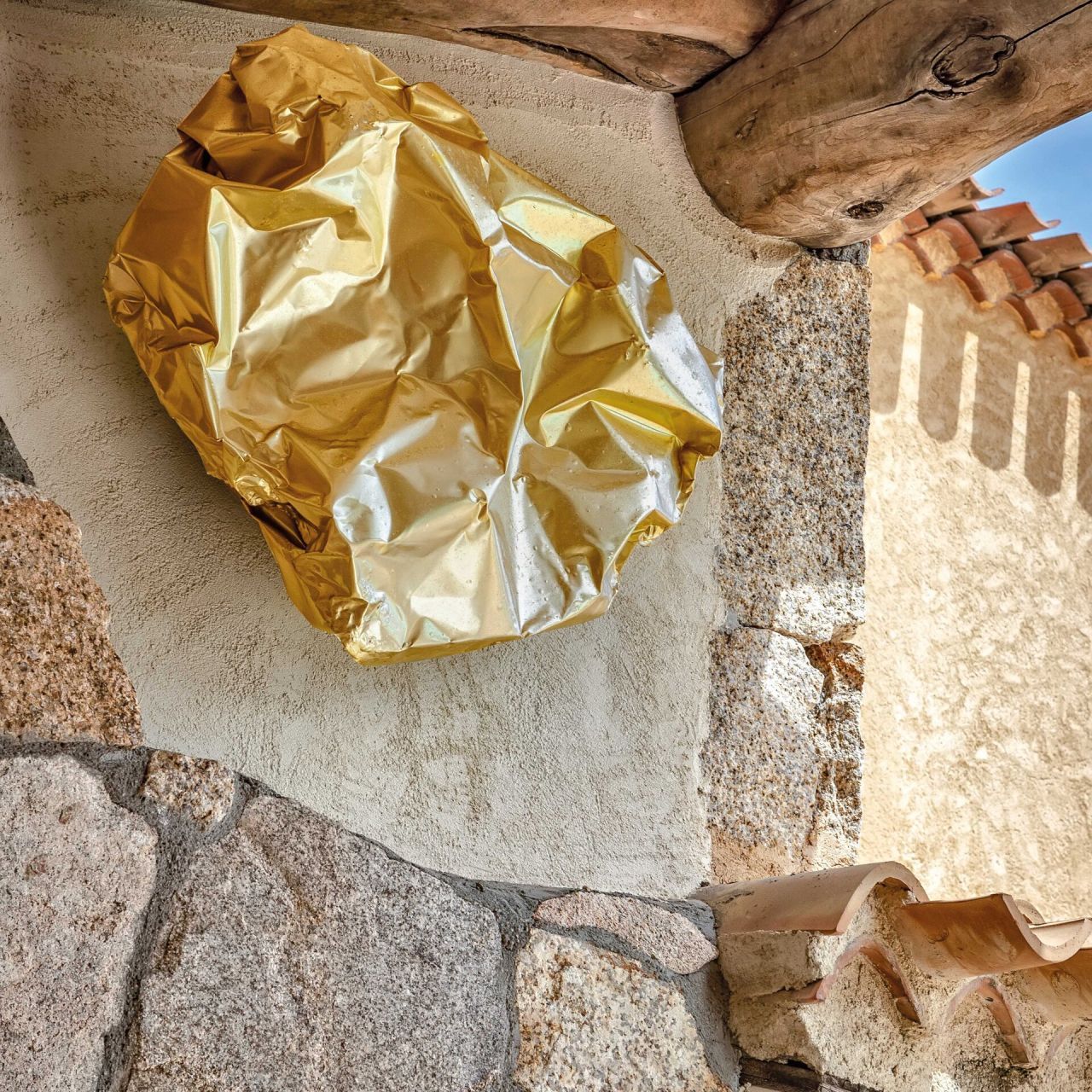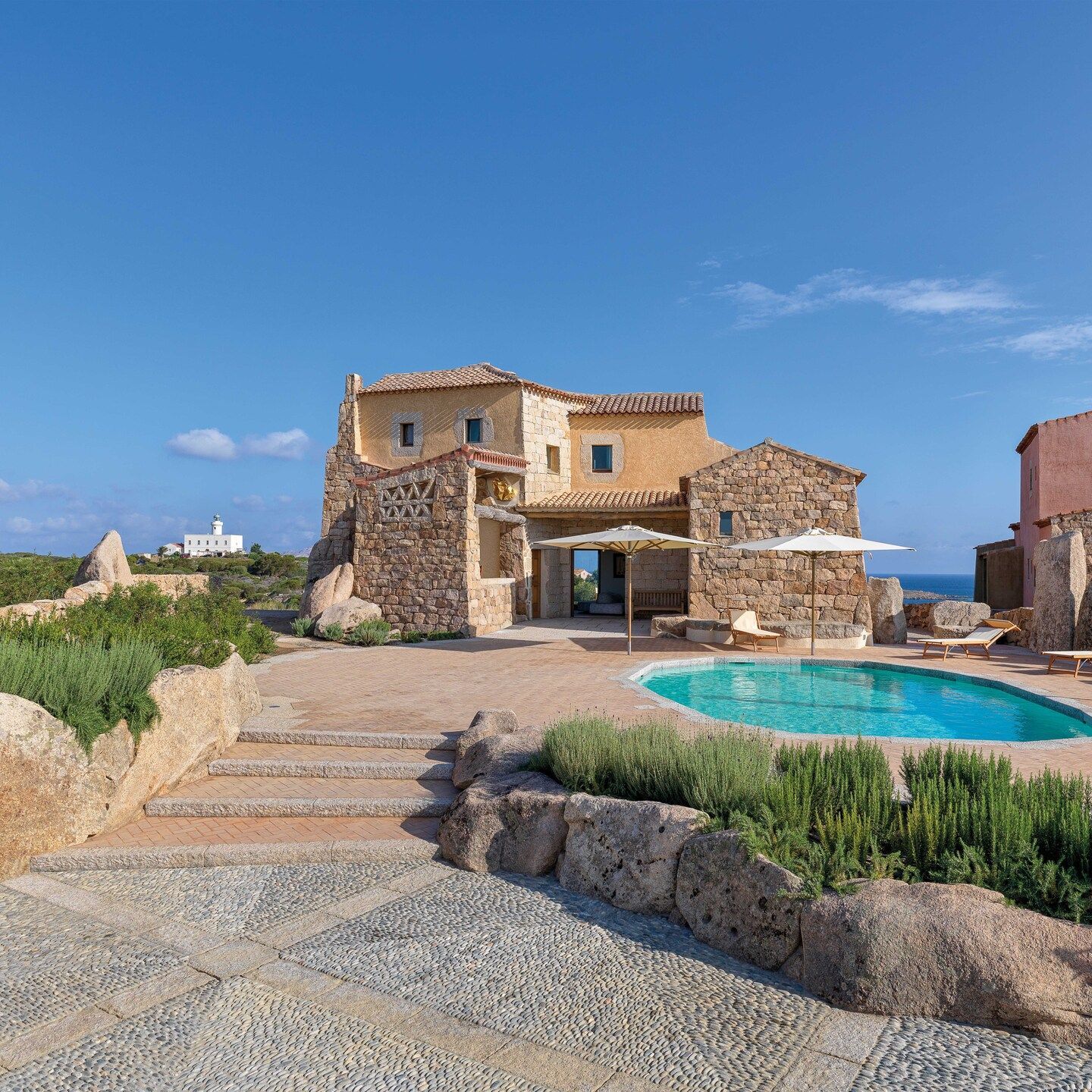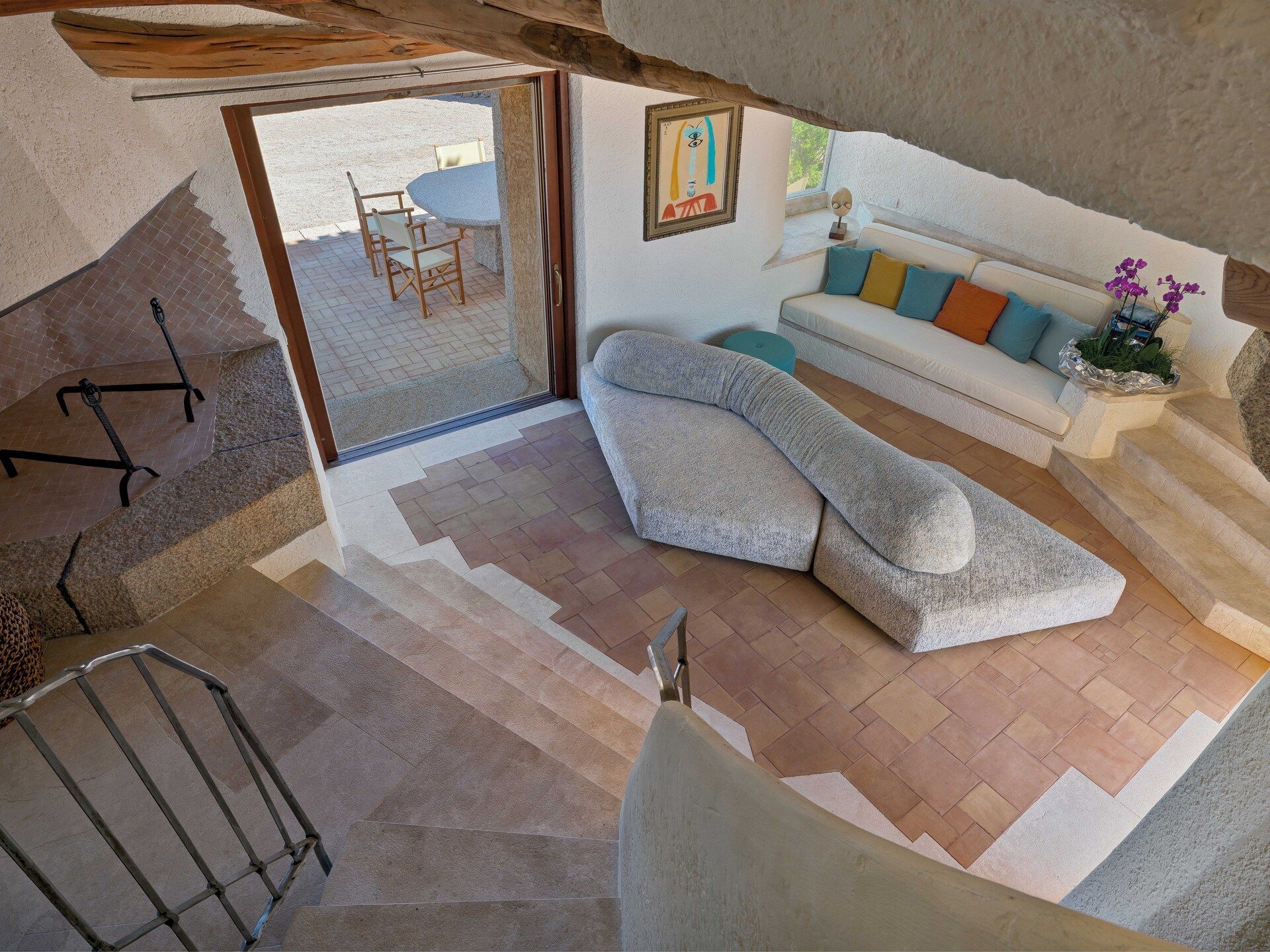
October 2023
Tiziana Lorenzelli
Il Faro, a piece of architecture carved into a rock
A project by Savin J. Couëlle on the Emerald Coast
The Il Faro [The Lighthouse] villa is located in an unspoilt Mediterranean maquis on the Capo Ferro promontory in Sardinia and enjoys the view of the lighthouse from which it gets its name. It was designed about twenty years ago by its owner at that time, the architect Savin Couëlle, the last of the “dinosaurs” to whom the architectural prestige of Sardinia's Emerald Coast is owed.
The architect designed it for himself, studying every small detail and expressing his functional and aesthetic preferences without restriction. The building encapsulates all the identifying stylistic features of his design process. It is conceived as a habitable sculpture.
Even though it is a small house compared to the majestic dwellings Couëlle designed during his intense activity, he used all the artistic expressions, building techniques and craftsmanship developed over the decades to realise it, in synergy with master craftsmen who grew up under his aegis. The absence of right angles, the attention to detail, the numerous expedients and variety of materials, and the harmonious creation of compartments and containers, are all part of the desire to conceal and store to surprise little by little. Gifted with an innate talent, Couëlle grew up between the literary intelligentsia and artistic career cultivated from an early age and the international jet set, developing an aptitude for beauty and excellence. Having passed the threshold of ninety years of age, until the end (2020), he maintained a judging gaze, capable of penetrating anyone like a laser, from the blue-blood to the bricklayer. Savin Couëlle drew very well freehand, possessed an incredible perception of space and followed the construction site assiduously, frequently changing the design if the visual perception did not satisfy him. He was always striving for perfection in composition. Il Faro appears composed of many multi-faceted elements that intersect and follow each other in an up-and-down movement as in a cubist painting.
In the living room, large windows with retractable sliding shutters open onto the swimming pool to the south and the sea and lighthouse to the north. Moving around the outdoor spaces, you can see right through the house thanks to these openings. Couëlle used to draw small windows positioned like frames for a landscape to be embraced while moving, rather than sitting still on the sofa. This was part of his desire to evoke surprise and amazement through design.
Above his small spatula-effect masonry sofa with white cushions and stone armrests, in the living room stands a terracotta high-relief that the architect chose for himself. Ceilings and walls are curved shapes that intersect with flowing lines and edges that were perfectly designed using a technique typical of the “concrete caves” of the 1960s.This is the same technique used by Jacques Couëlle in the construction of the Hotel Cala di Volpe.
Sharp-witted, curious and attentive to everything around him, the architect also intervened in finalising the few furnishing objects fit in for practicality in a kind of “walking in sculpture” designed down to the centimetre.
As an architect, I intervened in the interior design by constantly trying to find a dialogue with Couëlle, who did not like being interfered with in his work.
The choice of the On The Rocks sofa was rather risky because of its image and preponderant size in a cosy context; it was dictated by its functionality, comfort, versatility and the fabric that recalls Sardinian granite. It fits perfectly like the piece in a jigsaw puzzle. Couëlle approved my choice, too.
Alternating staircases conceived as sculptural elements enliven the space by connecting the different zones. Under the main staircase, the Miraggio mirror, designed by the Campana brothers for Edra, moves with the breeze to create kinetic plays of light, with a psychedelic effect reminiscent of coloured glass cotissi, which at sunset radiate a kaleidoscope of colours in space. “I had created a similar one in the 1960s, but it was composed of geometric mirrors,” Couëlle told me smugly when he saw it reflecting the sea and the garden. Opposite the mirror, the oversized fireplace - with its characteristic steel frame - is an identifying element of the French architect's work. Similarly, the twisted and alternating Y-shaped stainless steel railings, handcrafted and satin-finished, are a trademark, as are the table - which is a true work of art in steel and glass - and the cast brass handles in the shape of his signature. Savin Couëlle developed the art of metalworking during years of working with his friend, artist and architect Francois Thévenin, whose works - now hard-to-find - appear in his designs.
A few steps lead up from the living room to the master bedroom, with its four-poster bed made of ochre linen fabric, which allows one to enjoy the burning fire romantically while lying in bed. The gilded Aluflexia sculpture was also placed by Couëlle near the canopy, so it would interact with the living room. I am grateful to the architect for his fundamental impulse and involvement with my sculptures, which he scattered as points of light and surprise elements in various parts of the house. With his interest, he encouraged me to continue my research, especially in the direction taken with Magnetic Nuggets, which are freer and lighter forms that intrigued him. He kept one, fondly, in his study.
Each room, including the Marsala-coloured one with the iron four-poster bed designed by the architect, has fabrics in a different colour, with the curtains hanging from steel rings that slide on simple hand-forged bars. From the outside, the house is brightened up by various curtain fabrics standing out from the windows. The bathrooms are sculpted and hand-finished in actual blocks of white Orosei marble, modelled with soft volumes that intersect with broken lines as in the sculptures of Isamu Noguchi.
His love for nature, for marble and Sardinia's granite stone, is Couëlle's most characteristic note, and it was in his relationship with the landscape that he found his most spectacular inclination.
The house and its surroundings grow together in a global vision and feed off each other as in a “Landscape House”, as they were called in the 1960s. Couëlle's respect for nature and his ability to interpret it emerges in the design of the exterior. The architect made this house a cosy and evocative place, boundlessly into the cliff. To access it, one has to pass through a forged iron gate, fixed to the stone, with “Il Faro” (The Lighthouse), the name he chose, written on it. The emerald-coloured pool, painted in the green of olive leaves, is surrounded by a screen of monoliths up to two metres tall that change colour with the sunlight and meander, forming a “troglodyte” space spread over different heights. Arranged with an extraordinary sequence of vertical monoliths connected by horizontal flat stones that form the outdoor seating, this corner is one of Couëlle's most striking combinations of rocks, greenery and flowers.
Even more so than his father, the celebrated Jacques, famous for his organic architecture-sculpture, Savin Couëlle instinctively grasped the scenic presence of granite monoliths, using them to emphasise interiors and to create evocative scenic backdrops framing the “sauvage” green, an adjective he loved to use. Experience as a set designer endowed him with a perception of space, depth and perspective that allowed him to create unique gardens that were very difficult to create, moving tons of monoliths, shaping greenery like Play-Doh, setting up theatrical backdrops on the natural landscape, trying to avoid visual boundaries and using flowering species like an artist's brushstrokes on canvas.
 |
Tiziana Lorenzelli She graduated with honors with Zanuso at the Politecnico in Milan, where she taught how to profess under contract. She is an architect, has registered some patents and the Aluflexia brand with which she creates sculptures exhibited in Italy and abroad. |





